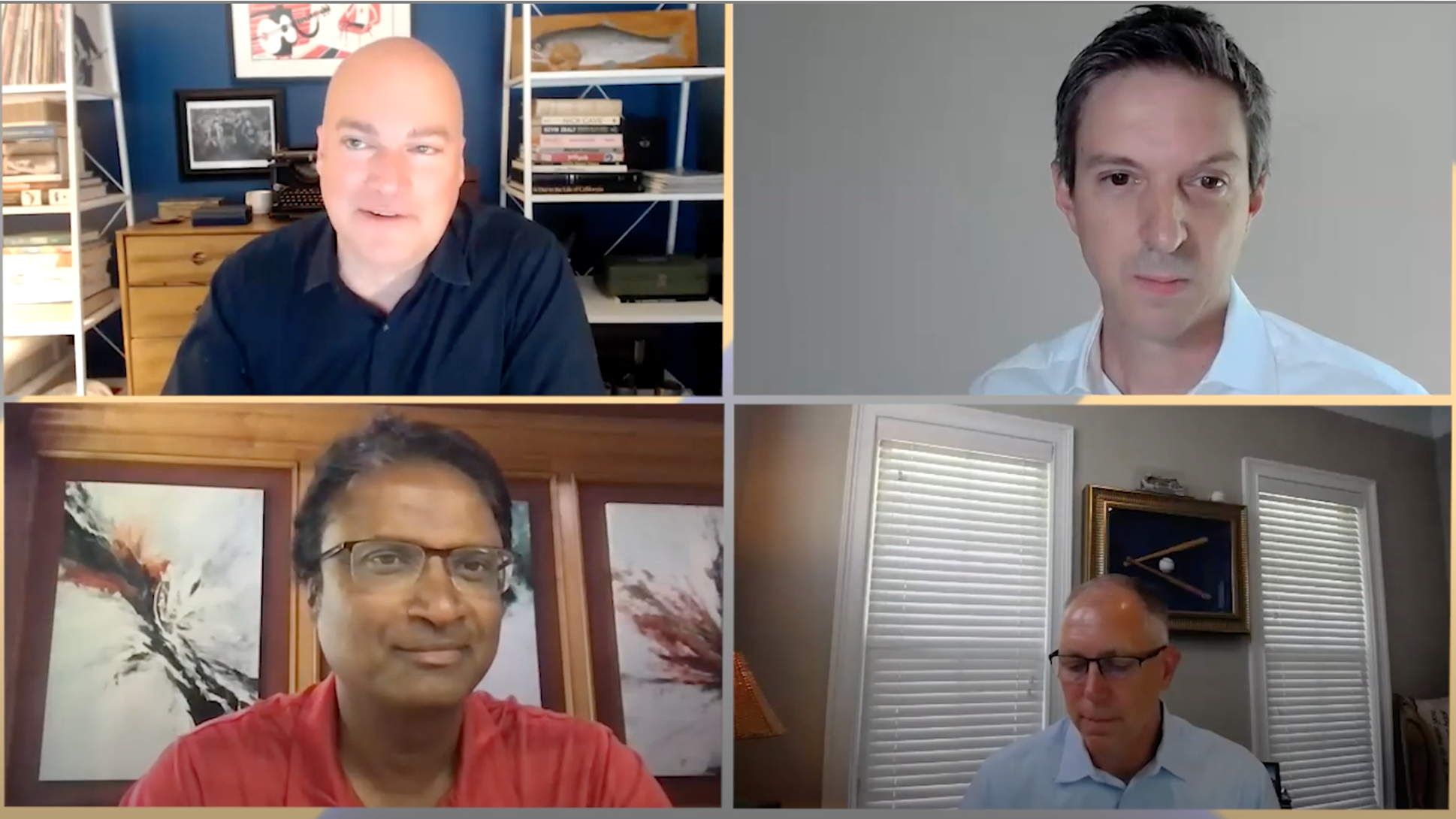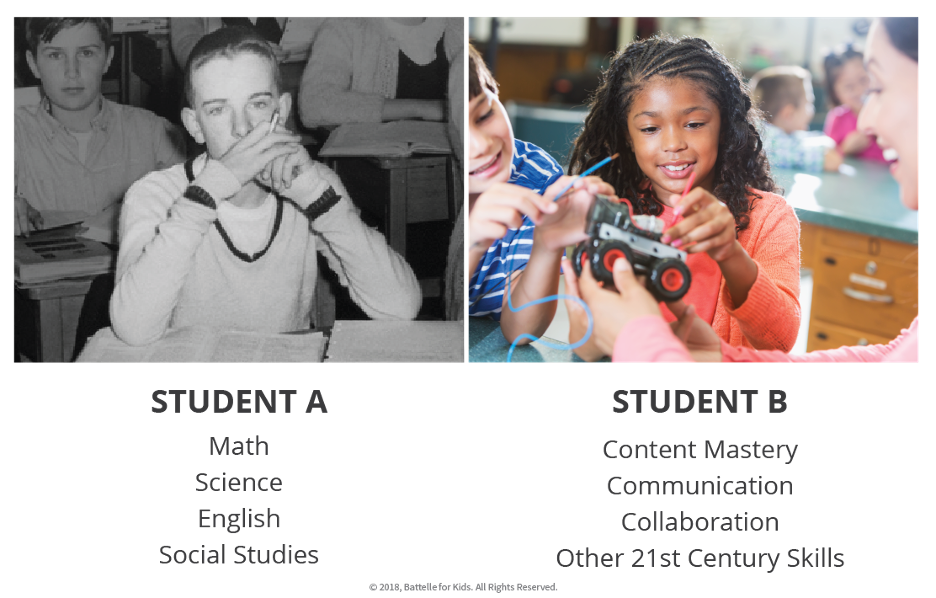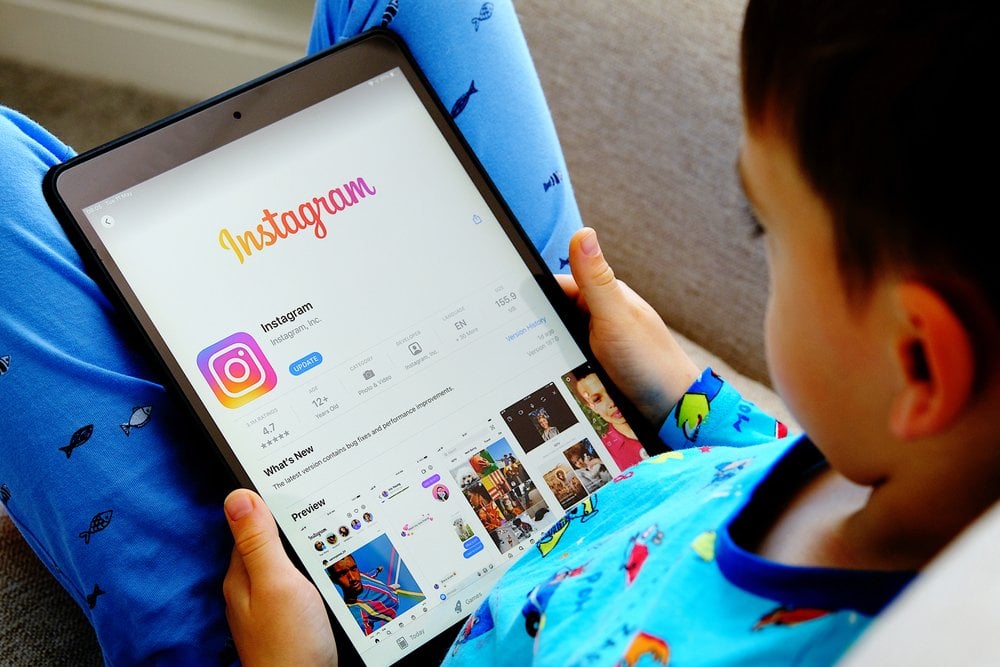In this session from Techonomy 2011, in Tuscon, Ariz., Mike Lynch, CEO of Autonomy, demonstrates new interactive iPad software developed by his company that can recognize objects in the real world and super-impose digital interactivity on top of them. Also appearing: David Kirkpatrick, CEO and Founder of Techonomy.
Lynch: This is just an iPad—it could be an iPhone but I’ll take video out—and it gives you an idea of the power of the new technology. What I’m going to do is, you just—this is continually seeing, so I’m not pressing anything. And if it sees something that it’s seen before it can recognize it. So a very simple example here is if we hold up this poster. Can you hold it so that the audience can see it? And I just allow the device to see that. What it’s done there—you can see it on the screen—is it’s recognized in real time the object and it’s dropped in a virtual version of that object. So we’ve brought together the virtual and the physical world. There’s nothing special about the poster. It’s just an image that the things seen before. Now, all of this is happening on the device, so that’s the power of the processing here. We’re not having to go off to a server or anything, and an iPhone will recognize about a half a million objects. So if we swap the object that happens to be in view we get a different effect. Again, relatively boring object which is just a poster—we did the old Harry Potter thing of making the picture—
Kirkpatrick: Yeah, change the orientation because it’s coming across sideways.
Lynch: I can’t see the screen from here, I’m afraid—
Kirkpatrick: Now it’s upside down.
Lynch: There we go. So what you’ve got there, again, is the ability to capture that—this is just a normal smart phone. Now remember, this is like looking at television in the 1940s, because these things are doubling in processing power every eight months, and that means what becomes possible moves on. The second thing is, the technology can understand the scene around it in three dimensions. We’re using some very clever things to do this. So for example, here we have a Harry Potter poster. As it moves in real time we keep the virtual object in place with the real object. Now, what that means is you can go anywhere in the world and create virtual objects in the scene, and of course you can make them interactive. So what we could do is just, if we wanted to buy those tickets we can just hit that screen and we can go off to the website and buy the tickets. So a completely boring physical non-interactive object becomes interactive. Other effects: print media. So what we’re seeing already now is people taking print media—so these are just newspapers, standard newspapers. The news gets printed during the day. Well, what you can do is update it, so the news can come to life. Now, I’m not using URLs, I’m not pressing any buttons, I’m not using any search terms; the thing is continually looking around to see if there’s stuff that it can recognize. Here’s an actual live advert that ran in Europe, and what happens here is that the guy actually comes out and talks to you about it.
Now, the important thing about this is that as the processing speed goes up we can deal with information in completely different ways. So I’m no longer using search engines, I’m no longer sitting in the bedroom, I don’t have a laptop, I don’t need to know about URLs, but also my answers are no longer textual, so if I actually start to recognize something that I’ve seen before I can actually have the answer come up in any form I like. So here we have a three dimensional dinosaur wandering around the place and we can interact with that and we can do things. So you imagine how cities are going to change. You can set this stuff up along Market Street in San Francisco, switch channel—Market Street is Harry Potter with dragons, might be historical San Francisco, and this is all creatable on the device without any programming. So that means that people can set up their own social views of their cities and interact with them and it’s a new way of dealing with information. So you can imagine everything, every object, every product, becomes interactive. You like the wine, you just whip out your phone, someone comes out from behind the wine bottle tells you about the wonderful Italian vineyard and then you can buy it. So, the whole way in which we’re going to use information is changing.
Autonomy CEO Mike Lynch Demonstrates Software That Makes Everything Interactive
Mike Lynch, CEO of Autonomy, demonstrates new interactive iPad software developed by his company that can recognize objects in the real world and super-impose digital interactivity on top of them.













